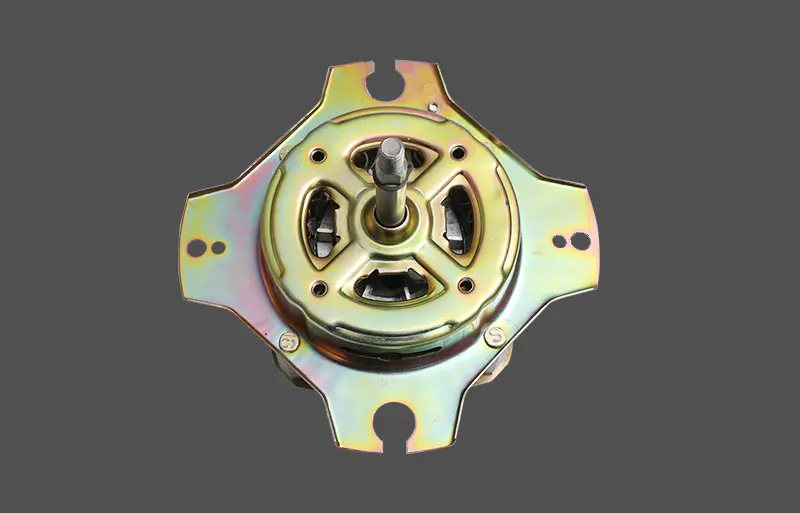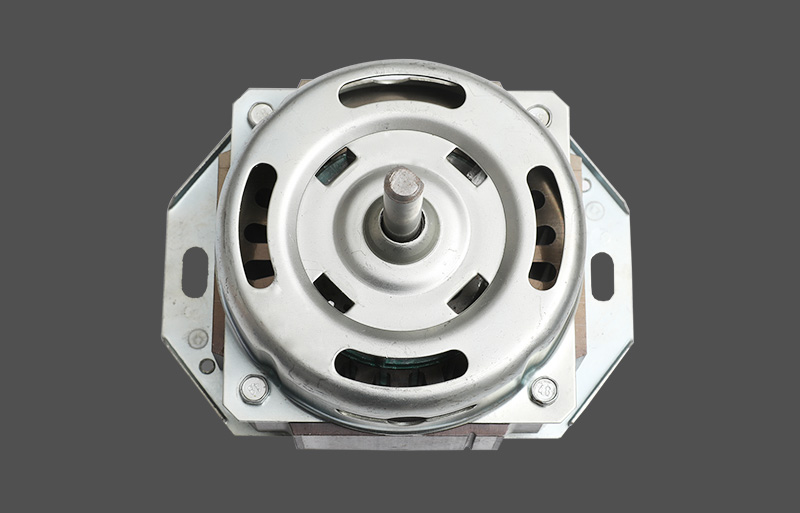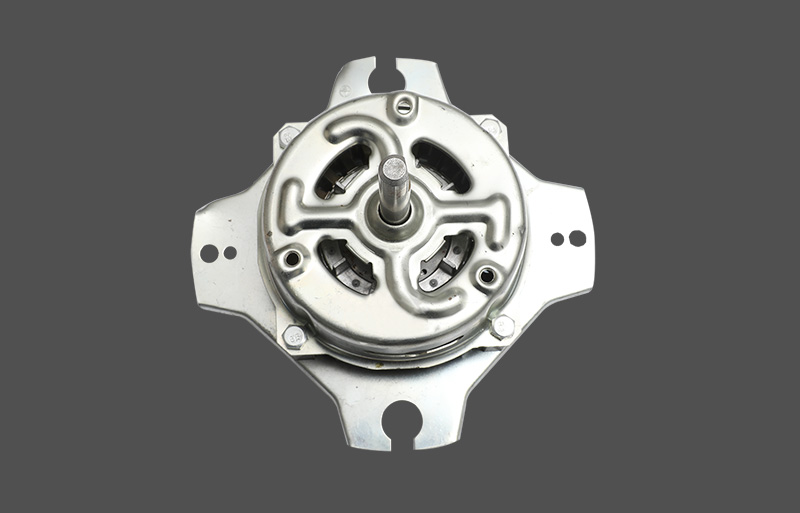The spin motor of a washing machine is one of the most critical components, responsible for extracting excess water from clothes during the spin cycle. However, over time, the spin motor may encounter various issues that affect its performance. Understanding the common failures of spin motors and their solutions is vital for extending the lifespan of the washing machine and improving repair efficiency.
1. Spin Motor Fails to Start
Description of the Issue:
When starting the spin cycle, the motor doesn't run at all, and the washing machine shows no signs of activity. This type of failure is typically caused by problems with the motor itself or the electrical system.
Common Causes:
-
Power Supply Issues: The power socket is not connected properly, or the power cable is damaged, preventing the motor from receiving power.
-
Control Board Malfunction: A faulty control board may fail to send signals to the spin motor, causing it not to start.
-
Worn Motor Brushes: For brushed motors, worn-out brushes can prevent proper current flow, resulting in the motor failing to start.
-
Overload Protection Activation: If the motor is overloaded or there is a mechanical blockage, the overload protection mechanism might cut off the power supply, preventing the motor from starting.
Solutions:
-
Check that the power supply is functioning correctly, and ensure the power cable and socket are intact.
-
Inspect the control board for any damage and repair or replace it if necessary.
-
For brushed motors, check the condition of the motor brushes. If they are excessively worn, replace them.
-
Ensure that there are no blockages inside the washing machine, and reset the overload protection system if it has been triggered.
2. Spin Motor Insufficient Speed
Description of the Issue:
During the spin cycle, the motor operates at a much lower speed than usual, resulting in poor water extraction and clothes remaining wet. This problem is typically related to power output from the motor.
Common Causes:
-
Motor Wear: Over time, wear and tear on the motor can lead to insufficient power output, preventing it from reaching the required speed.
-
Control System Fault: A malfunction in the control board may result in the motor not receiving the correct speed settings.
-
Low Power Supply Voltage: If the washing machine is receiving an unstable or lower-than-required voltage, the motor might not be able to reach the necessary speed.
-
Overload or Mechanical Faults: Excessive load or internal mechanical issues like worn bearings can cause the motor to struggle and fail to reach full speed.
Solutions:
-
Inspect the motor for signs of wear or damage and replace it if needed.
-
Check the control board to ensure it is sending the correct signals for the spin cycle.
-
Verify that the power supply voltage is stable and falls within the motor’s specifications. Consider installing a voltage stabilizer if necessary.
-
Reduce the load in the washing machine to ensure it is not overloaded and check for any mechanical issues, such as worn bearings or faulty transmission parts.
3. Abnormal Noise from the Spin Motor
Description of the Issue:
If the spin motor produces unusual noises or vibrations, such as grinding, squealing, or metallic scraping sounds, it typically indicates a mechanical problem with the motor or related components.
Common Causes:
-
Damaged Motor Bearings: Prolonged use can cause the motor bearings to wear out, resulting in friction and noise during operation.
-
Brush and Motor Contact Issues: In brushed motors, worn brushes or poor contact between the brushes and the commutator can lead to friction and noise.
-
Transmission Problems: Worn or loose belts, gears, or pulleys in the transmission system can cause abnormal noise during the spin cycle.
-
Uneven Load Distribution: If the laundry is not evenly distributed inside the drum, it can cause imbalance, resulting in vibration and noise.
Solutions:
-
Check the motor bearings for wear and lubricate or replace them as necessary.
-
Inspect the motor brushes and replace them if they are excessively worn.
-
Examine the transmission system for damaged or loose belts, pulleys, or gears, and replace or tighten the parts as required.
-
Ensure the clothes are evenly distributed in the drum, and avoid overloading the washing machine to prevent imbalance.
4. Spin Motor Overheats
Description of the Issue:
The spin motor becomes excessively hot during operation, potentially leading to the motor shutting down or poor spin performance. Overheating is often a result of excessive strain on the motor or poor ventilation.
Common Causes:
-
Motor Overload: If the washing machine is overloaded during the spin cycle, the motor may be forced to work beyond its design capacity, causing it to overheat.
-
Poor Ventilation: Blockages in the motor's ventilation system can prevent proper airflow, causing the motor to overheat.
-
Internal Motor Faults: Faults within the motor, such as short-circuited windings or aging components, can lead to excessive heat generation.
-
Control System Failure: A malfunctioning control system may cause the motor to run continuously at high speeds, leading to overheating.
Solutions:
-
Reduce the load size in the washing machine to avoid overloading the motor.
-
Clean the motor’s ventilation system to ensure proper airflow and prevent overheating.
-
Inspect the motor for internal faults, such as short-circuited windings, and replace it if necessary.
-
Check the control system to ensure it is properly regulating the motor’s operation during the spin cycle.
5. Spin Motor Runs Unevenly
Description of the Issue:
The spin motor operates erratically, with inconsistent speeds or vibrations. This can lead to poor performance in the spin cycle and could potentially damage the washing machine over time.
Common Causes:
-
Imbalanced Motor Rotor: If the motor rotor becomes unbalanced due to wear or external impact, it can cause uneven rotation and vibrations.
-
Loose Motor Mounting: If the motor is not securely mounted, it may wobble or shake during operation, causing instability.
-
Transmission Malfunctions: Issues with the transmission system, such as stuck or worn-out gears, belts, or pulleys, can prevent smooth rotation and cause jerky movements.
-
Imbalanced Load: An uneven load in the drum can also cause instability during the spin cycle, leading to vibrations and motor strain.
Solutions:
-
Check the motor rotor for signs of imbalance and realign or replace it if needed.
-
Ensure the motor is properly mounted and secure within its housing.
-
Inspect the transmission system for damage or wear, and replace any faulty components such as belts or gears.
-
Redistribute the laundry evenly in the drum and avoid overloading the washing machine.











